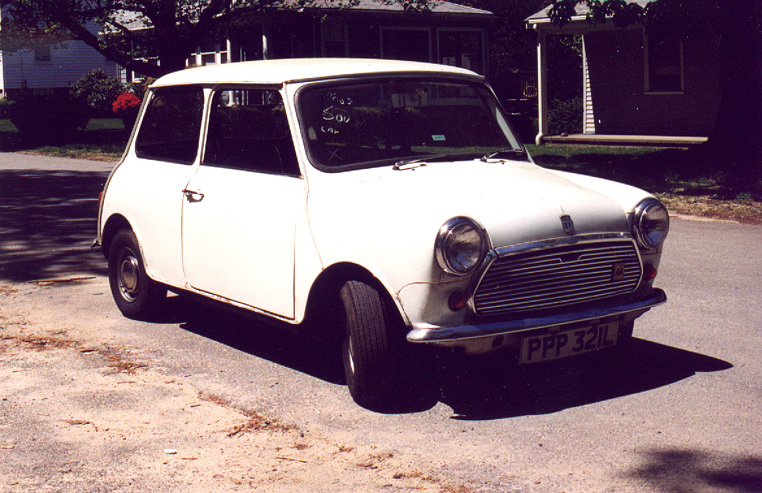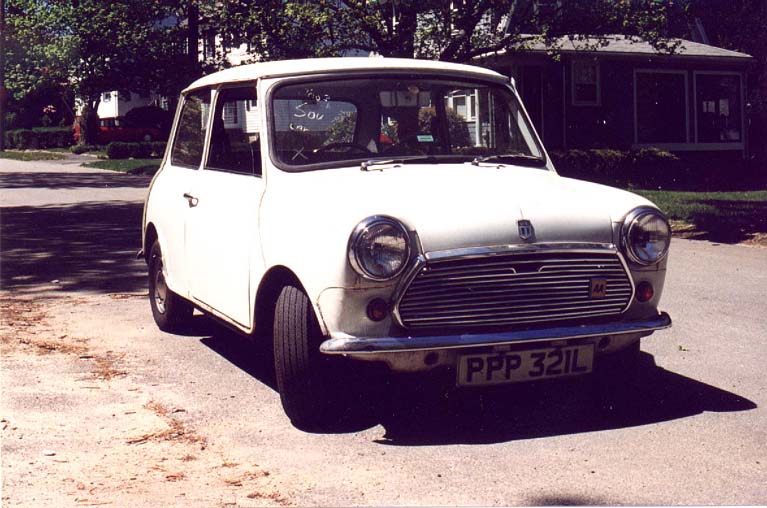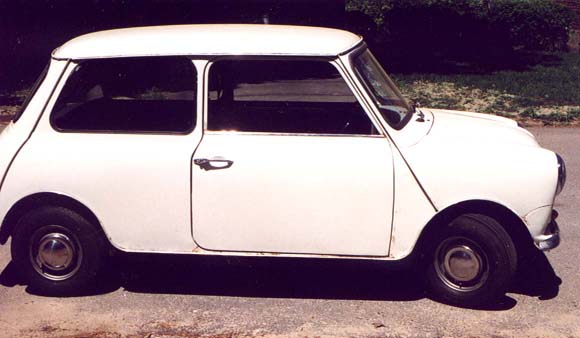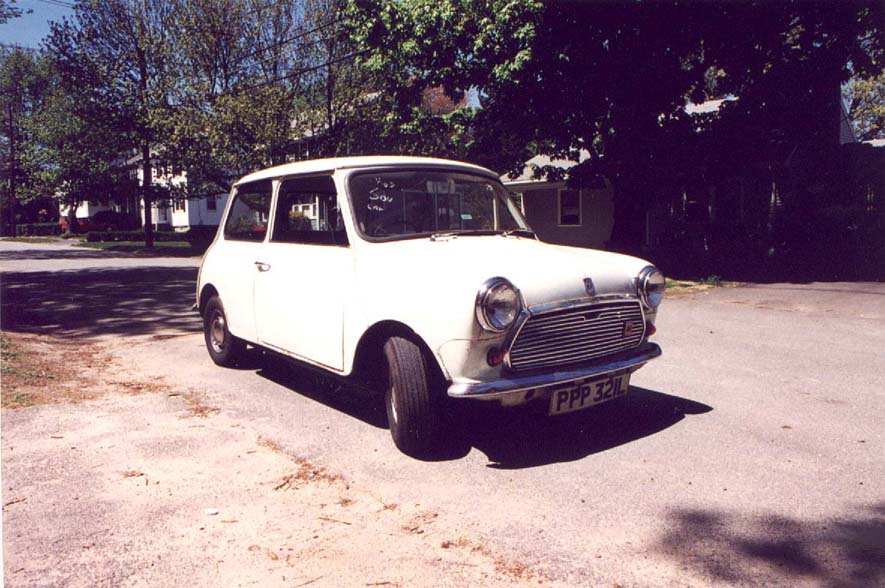
April 19, 1999 (finished on 4-30 despite what I may have said below)

Well, what I had intended to be a weekly column has turned into something closer to a biannual thing. But tonight I'm going to write and to hell with what it comes out as!
Last week our taxes were due. I did mine myself for the first time and boy, was it a pain. I can see why there is a movement towards a flat tax rate in the government. I'm just a student with a few stocks and one interest bearing account and I wish I had agreed to let my father handle my taxes. What a pain in the ass it was. I wonder how many people cheat a little just to make the whole thing easier? There were people at the post office on April 15 at 11:30 pm sitting on the floor scrambling to fill in all the necessary tax forms. I won't believe that every single one of them completely and truthfully answered every question-this country isn't that honest and even less patient. But no matter, I've got my butt covered and hopefully the government will agree with me.
On a different note, last month I bought my first car that will be totally maintained and insured by me. For those of you who are in the know, like Eric back home, you'd know that if I owned each of two particular cars, I wouldn't ever have to have sex again. The first car is a Porshe 911, but those are a bit expensive so I'll set my sights on them when I'm a millionaire. The second is a car that, though of very little stature, possesses a spirit that speaks to the soul. Well, it does to my soul, at least. The car is the Austin Mini.

Designed by Sir Alec Issigonis in response to the first Suez oil crisis in 1956, the Mini carved itself a niche in the automotive world with innovative engineering and a body design that has survived virtually unchanged to this day. The Mini was created with people in mind and as a result, 80% of the volume enclosed by the Mini body was allocated to passenger area. This is including the engine bay as well as trunk and extra tire, though obvious trade-offs were employed evident by the 5.5 gallon gas pitcher. 80% may not sound so great when compared to cars of today, but with an automobile that is barely four feet wide and shorter than most people can spit, I think it's damn impressive.

Another impressive piece of the car is the engine itself. When Issigonis began designing the Mini for British Motor Company (BMC), Austin, a subsidiary of BMC since 1951, had already developed a line of engines, the A-series, for cars such as the Morris Minor. The engine that ended up in the first Minis, as well as my car, was a variant of that series displacing 848 cubic centimeters and making 34 whole horsepower. More variants of the engine, displacing 997, 998, and 1275 cubic centimeters, were developed later for the Mini. The placement of the engine in the engine bay is also worthy of note. When put in "normally", then "front" of the engine, and therefore the crankshaft, faced the right side of the car. This meant that the exhaust pipes faced the front of the car and would have to be snaked either around or under the engine while the carburetor, placed just behind the grill, would be prone to icing during the winter. A decision was made to turn the whole unit 180 degrees to solve the exhaust plumbing problems. However, this meant that the crankshaft would be turning the wrong direction. An idler gear was put in, resulting in a 4% loss in power, and all was well.

The engine, as well as all front suspension pieces, were attached to a subframe and then attached to the main body. This was also done for the rear components and makes for quick and easy repairs. If a part of the frame is damaged, only 1/3 of the frame needs to be replaced instead of the whole thing. The gearbox was ingeniously place below the engine in the sump, sharing oil with the unit above, though in examination this was the only place to put the gearbox.
With the Mini being so small, several problems dealing with weight and weight distribution were encountered. Since the engine was in the front of the car, the rear end was very light and the rear brakes tended to lock up the even under light braking. To alleviate this problem, the battery and fuel tank were put in the trunk, and a rear brake limiter was incorporated into the brake system. Another problem area was in the suspension. With four people in the 1300 lb car, the overall weight could easily be increased by 50%. If the Mini were to be fitted with conventional spring and piston shocks to deal with such loads, the unloaded ride quality would be rock hard, or would have to have such a long shock travel that it would make the car unstable in turns. Plus, the limited room underhood prevented the use of the available shocks at the time. Issigonis turned to rubber suspensions using rubber cones in place of shocks and struts. Rubber has the useful quality of becoming stiffer when compressed so it was a natural alternative to conventional units.

While on the subject of small, the Mini's wheels measure a diminutive 10" high. Issigonis worked closely with Dunlop to produce a tire that fit the Mini wheels and it is even said that Dunlop worked to develop rubber for an 8" wheel though that was abandoned when it was determined that the brake system would not fit in the wheels.
Wrapping all this hardware together is the Mini body; one that I say is second to none. Though there has been three body revisions, (MkI, MkII, and MkIII) the Mini's shape, as I said above, has changed very little since its development. The Mini was designed with economy in mind so welds are on the outside of the body, cleverly hidden by water seals and strips. In the MkI models, even the door hinges are on the outside of the body-much like those on modern day Jeep Wranglers. Since the Mini had very little room in the trunk, the trunk door was designed to swing downwards, thereby creating a shelf on which more luggage can be stacked. (The license plate was only attached on its upper edge allowing it to swing forward into view when the trunk lid was open).
Usually with "econo-boxes" such as the Geo Metro or Ford Fiesta, road performance is somewhat tame. Not so with the Mini. Enthusiasts in the 60's soon figured out that the Mini possessed remarkable handling skills. Coupled with a very light car, the Mini had racing potential like no other. In 1961 John Cooper created a Rally-spec mini with a variant of the 997 (and later 1275) engine. Mini Coopers, as they are called, were distinguished by a special paint scheme (the car pictured above is a Cooper lookalike) as well as three or four large spotlamps in front of the grill. These cars drove to remarkable success in rally races winning the prestigious Monte Carlo Rally several times. A good movie to watch showcasing the Mini is "The Italian Job" (1969) starring Michael Caine. It is precursor to such movies as The Gumball Rally and Cannonball Run, and unintentionally applauds the size and performance of the Mini.

Well, I'm going to stop now. My Mini should arrive here by the end of next week, so if any of you want a ride, I'll be glad to oblige! But until then, I'll just have to dream a bit more. Bye!